Weapons:
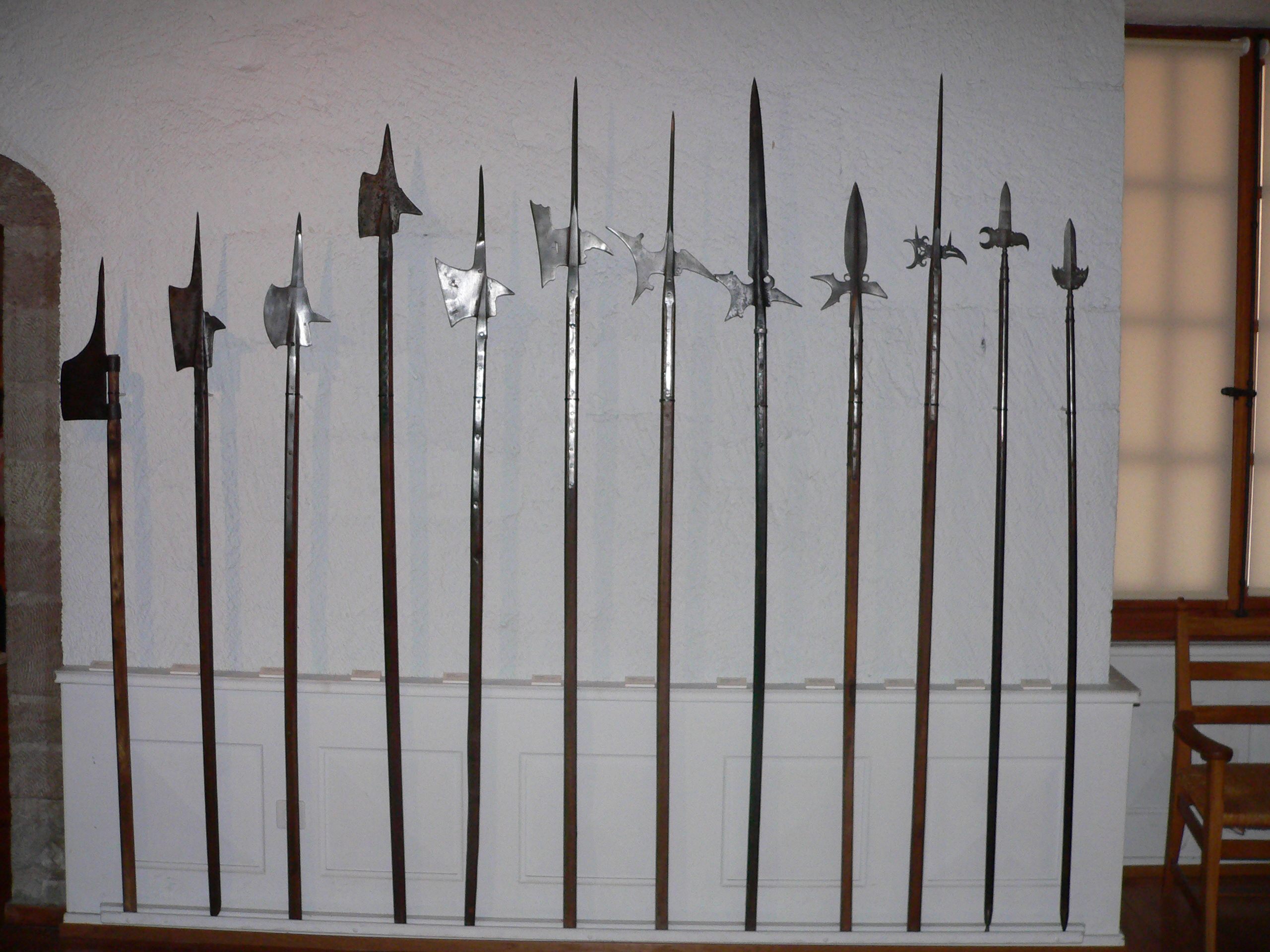 Primary Weapons: 2d6 damage. 10 gp for bludgeoning and 20 gp for slashing and piercing.
Primary Weapons: 2d6 damage. 10 gp for bludgeoning and 20 gp for slashing and piercing.
These are weapons of war whether a musket, a longbow, a heavy crossbow, a spadone (warsword/greatsword), a polearm like a poleax or partisan, rifle with a bayonet, a dane-axe, or in a modern setting an assault rifle and in a future setting a plasma rifle.
Most are used with two hands the majority of the time but may be paired with a small shield like a buckler. These weapons are often heavy and big making them inconvenient to take while shopping at the market and likely to disturb social interactions in certain settings or environments or be illegal in some jurisdictions.
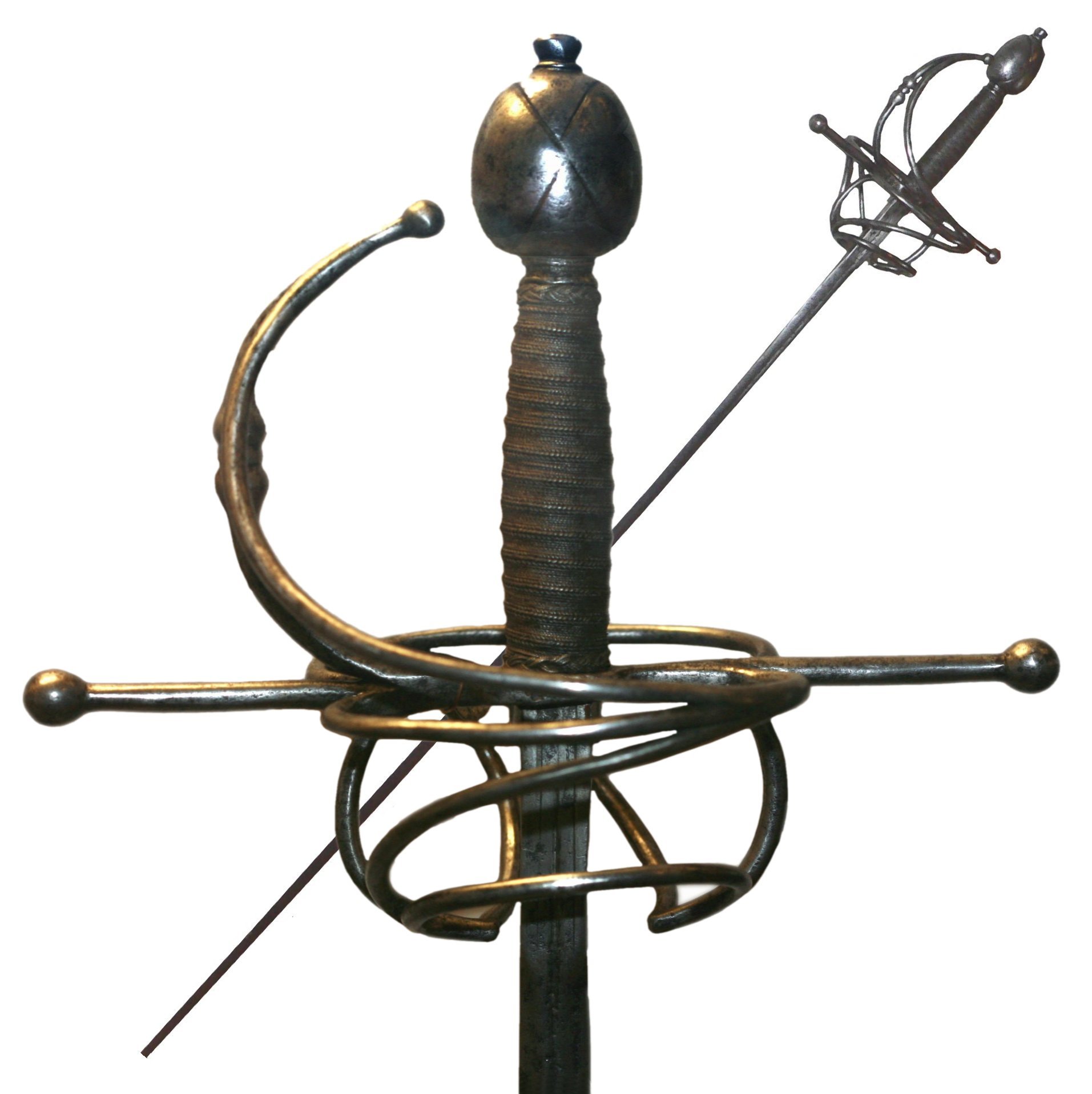 Sidearm Weapons: 1d8 damage. 1d10 damage versatile. 5 gp for bludgeoning and 10 gp for slashing and piercing.
Sidearm Weapons: 1d8 damage. 1d10 damage versatile. 5 gp for bludgeoning and 10 gp for slashing and piercing.
These are weapons of convenience that are easy to carry around in daily life or as a backup when the Primary Weapon fails. A revolver, a light crossbow, a sword, a mace, or a bearded axe. The Romans in contrast famously used their sword and shield combo but one could say that their primary weapon was the large shield from a certain perspective but usually these are backup weapons or for civilian use.
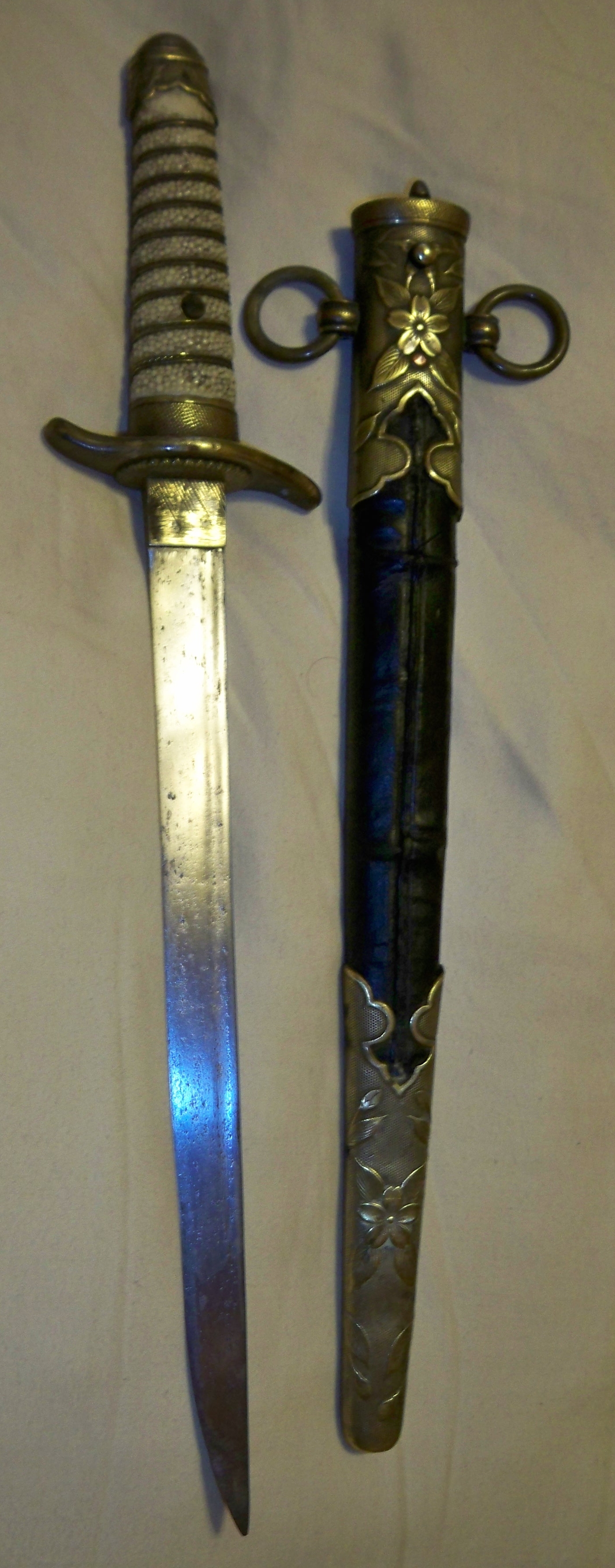 Close Weapons. 1d6 damage. 1 sp for bludgeoning. 1 gp for slashing or piercing.
Close Weapons. 1d6 damage. 1 sp for bludgeoning. 1 gp for slashing or piercing.
Thrown weapons using muscle power like a javelin or a dart or a throwing star and weapons used in close while grappling such as a bollocks dagger or even a hand crossbow or holdout/pocket pistol.
This system makes weapons a bit easier to handle and gets rid of bad decisions mechanically inspired by role-playing. I’m really not certain why they decided certain weapons are finesse weapons (rapiers are one of the harder weapons to use if you don’t have strong forearms, wrist, and grip for example while many longswords are very nimble plus you get to use two hands so the weight is easier to handle and you have a lever.
If you want to add a bit of complexity consider that most melee weapons are either tip heavy (Powerful) and do more damage or they are quick to defend and strike (Nimble) because the point of balance is near the grip.
Nimble weapons could use Defensive Duelist rules without buying the Feat. This would be most swords and many spears.
Powerful weapons could add Proficiency to Damage. This would be maces, axes, and pole-axes.
You can also specify that a weapon is Simple or Martial and adjust prices and damage. A Martial weapon could bump the die by +2d and double the price or you could have simple weapons be 1/10 the price and drop it by -2d this would give you daggers in the PHB and darts for example.
Another option would be to have weapons of quality used as a social/virtue signal showing your status and taste or lack thereof using things like mass manufactured munition grade gear and weapons as objects of art that cost much more and immediately warn others of high status (while also attracting attention from the more nefarious).
Shields:
+2 to AC. 1d6 bludgeoning (unless spiked then piercing). 1 gp for buckler. 10 gp for martial shield.
I usually assume that a PC is carrying a buckler shield unless otherwise stated because in most cultures for over a thousand years from India to England the buckler was ubiquitous for its usefulness and compact size. It is easy to strap to a belt or over the handle of a sword. Convenience rules for shields for civilians. Spiked bucklers were fairly common at certain times and locations and often made illegal as a response to roguish elements being fond of their use in closed in alleys and in crowds.
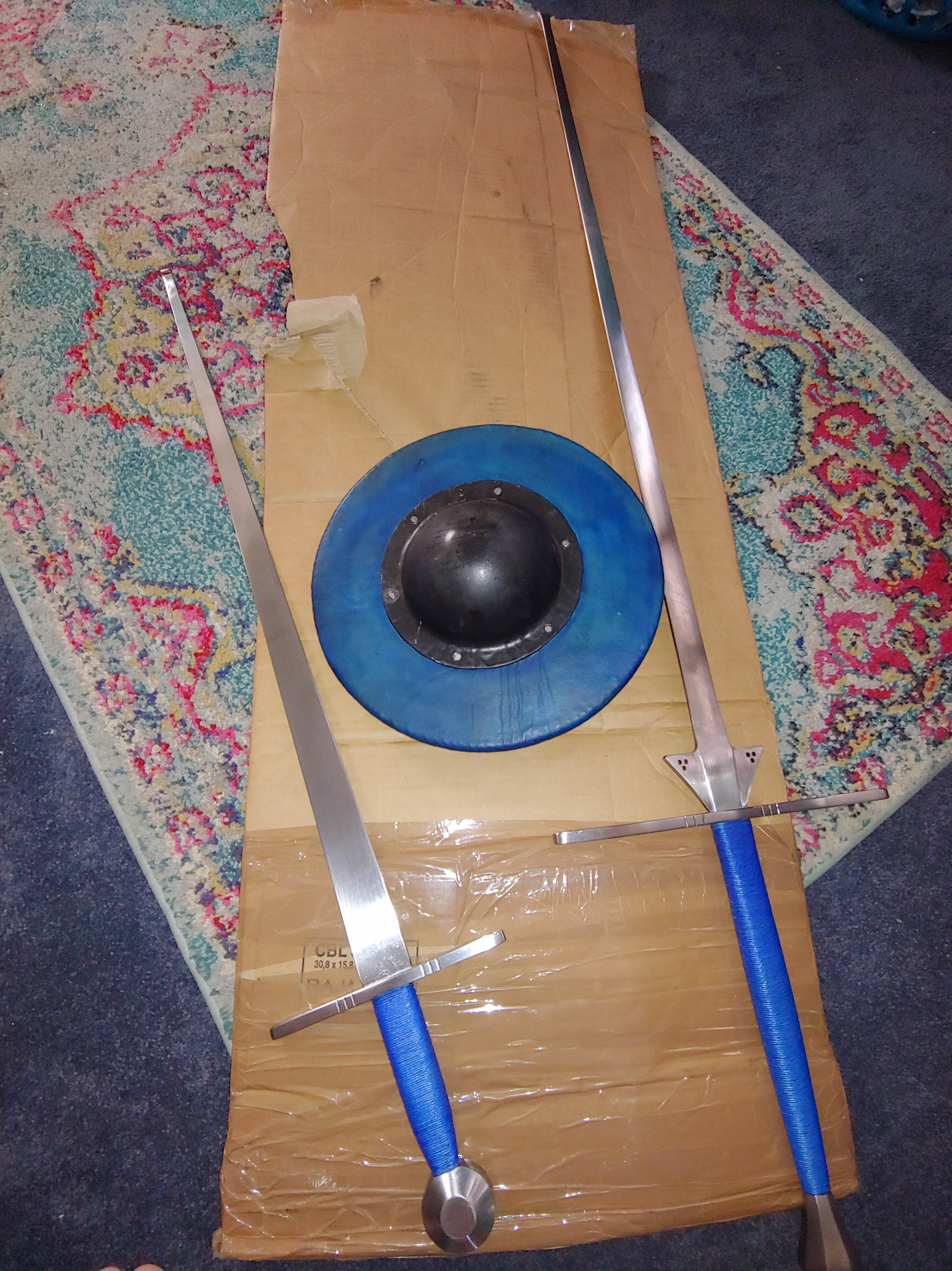
To the left is my buckler shield along with my arming sword and two handed longsword from Sigi Forge. You can see how easily such a shield could be carried compared to a two handed talhoffer dueling shield weighing thirty times more.
For war you might consider allowing large shields that offer Cover. A Tower shield, Tallhoffer Dueling Shield, or a Pavise that would be slammed into the earth all provide excellent cover (three quarters) for archers and crossbowmen. A kite shield or boss gripped viking shield might provide half cover while instead. Both would be much heavier and be much more inconvenient to carry around and mostly used for war.
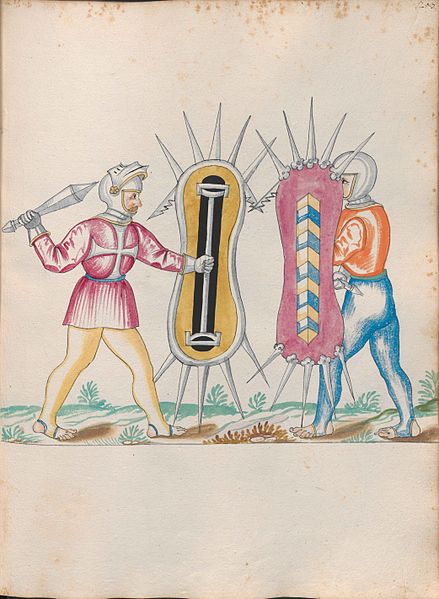
When you make the shield bigger you end up gaining and losing advantages as you size up or down. From my experience in a duel they are basically equivalent thus the +2 AC for all shields but I know if I’m being shot at in a battle that I’d much rather have a more martial shield to hide behind thus a PC going into war might carry a big shield but a PC going to shop at the market will wear a small buckler.
Armor:
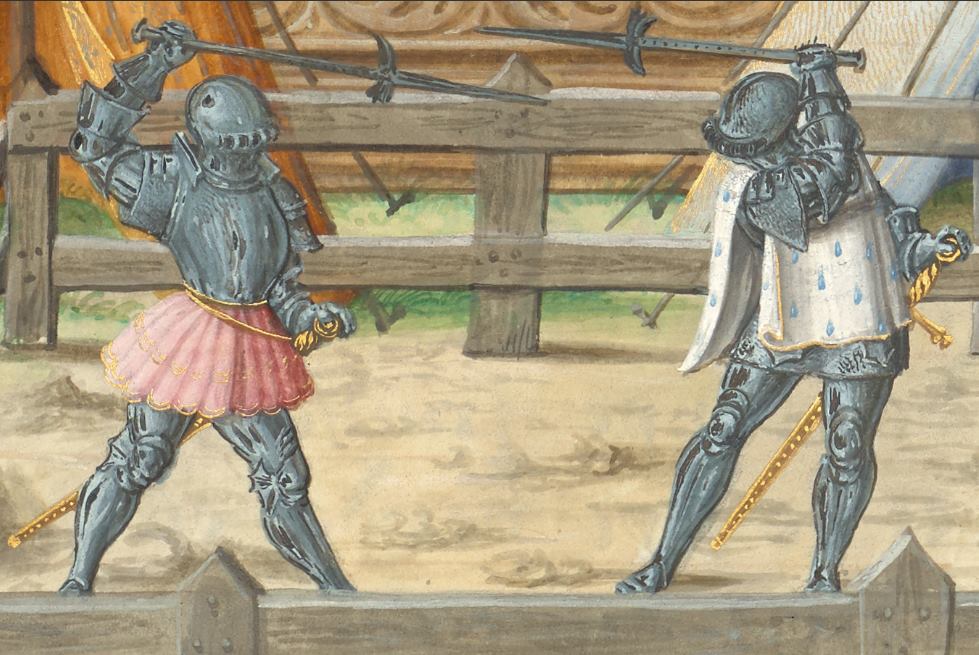
Full Coverage: +2 to AC, 2 Damage Resistance, and Resistance to Slashing. Double cost and double weight. Stealth Disadvantage. Max Dexterity to add to AC is 2.
This is armor for war or martial tournament that covers most or all of your body. It is extremely hard to injure a person in even a good cloth armor with a slashing weapon let alone someone garbed in a coat of plates, plate armor, or mail. You would not wear this around socially. Imagine if you’re having dinner at a posh restaurant and a SWAT officer in Riot Gear sat down at the table next to you.

Core Coverage: the standard assumed armor for adventurers out on the town that protects the head and torso mostly and may have some arm and leg parts. This is armor that you could wear out on the town and not be overly inconvenienced and in many settings not attract undue attention. It could be a simple gambeson made of linen (Padded Armor in D&D) or a really tough and padded leather jacket in modern day.
Light Armor: +2 AC. 10 pounds. 10 gp. May add Dexterity Mod to AC.
Medium Armor: +4 AC. 20 pounds. 25 gp. May add Dexterity Mod -1 to AC if Strength is 13+.
Heavy Armor: +6 AC. 35 pounds. 50 gp. May add Dexterity Mod -2 to AC if Strength is 15+.
And just like weapons you can tweak these by having bespoke gear be tailored to a wearer so the weight is properly distributed cutting the “effective” weight of the armor in half and you could have elegant works of art armor like something made by Negroli that cost the annual taxes from an entire duchy to make. You can have special advantages of certain armors made by smiths in different lands and cultures. If you have better steel and can mass manufacture breastplates than mail becomes regulated to just the gaps between plates. If labor is cheap than mail is cheap but if labor is expensive few will wear mail if anything else is available. So, in one kingdom a mail shirt might cost fifty gold while in another it might cost 10.
You can put a jupon on plate and pad out everything to make it more stealthy at some cost in weight and size.
Armor doesn’t have to involve much dexterity limitations. People wear plate and do gymnastics and run marathons. Well made plate, primary weapon, sidearm weapon, and close weapon with pack is about the same weight that a modern day infantryman in full gear would wear and go tramping around in the hills, woods, or deserts of the world today.
You could also have Simple and Martial armor with some sort of simple differentiation with AC and having Simple be cheaper.
Oddly enough historically a buff coat made of layers of leather was often more expensive than a steel breastplate which would often be put on top of it as usually the buff coat was tailored or bespoke for the officer while the steel breastplate might be munitions grade and roughly sized like buying a tshirt today online with all the vagaries and guessing games between makers.
In the middle ages a full set of leather armor would be very expensive too and would be extremely rare. Usually leather was saved for gloves, boots, and straps to hold on better things.
Studded leather was a mistake from the early days of D&D looking at a coat of plates or brigandine styles of armor which gain their protection not from the leather but the metal, bone, or other material that was studded to the leather. This would be like calling a modern kevlar vest with plates inside pockets: pocketed kevlar and assuming that the extra layers from the pockets are what provided the extra protection!
A fun thing might be to have dwarven steel armor put out most of the neighboring human armor makers out of business in a game…maybe the PC’s get hired to steal their steel secrets!





















 Primary Weapons: 2d6 damage. 10 gp for bludgeoning and 20 gp for slashing and piercing.
Primary Weapons: 2d6 damage. 10 gp for bludgeoning and 20 gp for slashing and piercing. Sidearm Weapons: 1d8 damage. 1d10 damage versatile. 5 gp for bludgeoning and 10 gp for slashing and piercing.
Sidearm Weapons: 1d8 damage. 1d10 damage versatile. 5 gp for bludgeoning and 10 gp for slashing and piercing. Close Weapons. 1d6 damage. 1 sp for bludgeoning. 1 gp for slashing or piercing.
Close Weapons. 1d6 damage. 1 sp for bludgeoning. 1 gp for slashing or piercing.



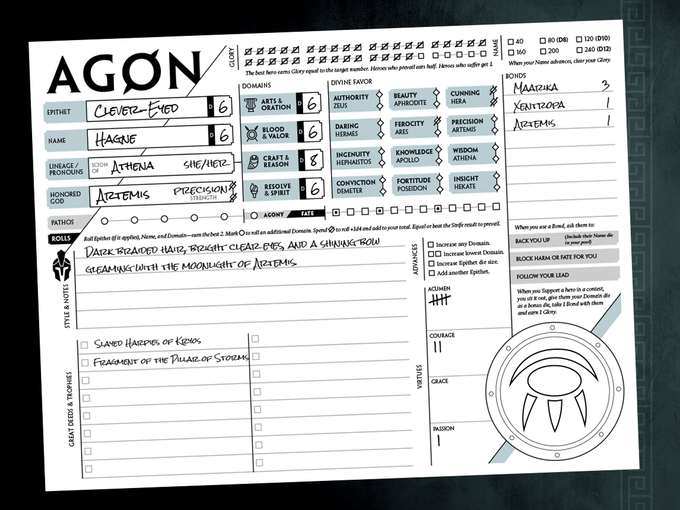 I’d like to see more epithets get added as it can be daunting for some players to come up with good descriptors. I’d really recommend taking a look at the new Cypher rulebook for ideas if they don’t and then just give it a divine greek twist or go and look up epithets used by your divine ancestor or even look at other pantheons like the Celts such as Lugh Lámfada “of the Long Arm” and Samildánach “Equally Skilled in Many Arts” (basically means jack of all trades in today’s speech).
I’d like to see more epithets get added as it can be daunting for some players to come up with good descriptors. I’d really recommend taking a look at the new Cypher rulebook for ideas if they don’t and then just give it a divine greek twist or go and look up epithets used by your divine ancestor or even look at other pantheons like the Celts such as Lugh Lámfada “of the Long Arm” and Samildánach “Equally Skilled in Many Arts” (basically means jack of all trades in today’s speech).